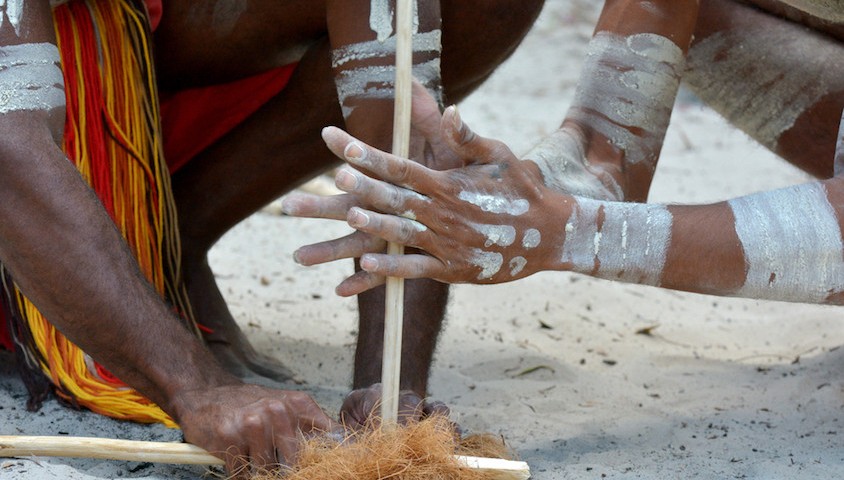As another summer draws to a close, many are looking with relief to the cooler months, where a brief respite will be found from the extreme conditions of our sunburnt country. Among them will be those living in bushfire prone areas, regions where there are just two weather cycles: bush fire season and the rest of the year. This is particularly true in southern Australia, where the most combustible forest on earth requires the largest firefighting force in the world to be standing ready.
As the global temperature rises and development encroaches further and further into the wilderness, questions have been asked about the efficacy of the current firefighting system.
Any discussion must start with an undeniable truth: much of Australia’s unique flora is well adapted, if not dependent, on fire, and fossil evidence indicates this was the case prior to the arrival of people. However, tens of thousands of years of human habitation has likely left its own mark. The reason for this can be put down namely to the dramatic effect of ‘fire stick farming’, a term first coined by archaeologist Rhys Jones in 1969. At its most basic, fire stick farming can be defined as the systematic burning of land in order to concentrate food sources in certain areas. It also serves to regenerate vegetation.
The early Europeans settlers remarked how much of Australia’s wooded areas resembled the hunting estates of Northern Europe – treeless clearings, with very little in the way of undergrowth, allowing the hunt to move freely through forested areas. Intrigued, they believed that such manicured landscapes represented the land’s natural state. This interpretation could not have been further from reality.
In his celebrated 2012 work The Biggest Estate on Earth, Bill Gammage outlines how countless generations of Australia’s first people managed the land through a ritual, cyclical calendar to ensure rejuvenation in all areas. Gammage has highlighted just how extensive this land management was: it was not restricted to any one region but embraced by nations across the continent. As the title suggests, Gammage describes pre-1788 Australia as ‘one estate…with many managers’. With such an image in mind, it is not just a romantic notion to infer that Aboriginal people truly were living as one with the land before European intervention.
In stark contrast, the centuries since settlement have, according to Gammage, seen the landscape fall into neglect. Undergrowth has been allowed to grow freely and has not been kept in check, making the land much more susceptible to uncontrolled fire. One of the contentious reasons that bushfires burn so fiercely in Australia has been the presence of a high fuel load – represented by the untended undergrowth – forcing any fire to ground level and therefore burning with far more intensity than the managed fires of past millennia.
While an uneasy consensus has formed (following official investigations into large scale bushfire catastrophes) that more controlled burning is required, it can be a difficult process. Early European observers commented on the number of fires and consequent smoke that was evident. Fire stick farming was a major undertaking by individual tribes yet was probably more easily managed after thousands of years of sculpting the bush. A much smaller population – in comparison to modern day Australia – was to be inconvenienced or endangered when benign conditions change suddenly.
Additionally, there is a well-entrenched view that the wilder the bush, the more natural and authentic it must be. It would be quite difficult to dislodge such thinking – particularly in persuading the environmentally active – that the true state of Australia’s non-farmed stretches should look as if they were managed by dutiful foresters.
Therefore, there is much to consider before deciding to simply burn and try and return to the landscape of the past. Some heavily vegetated areas of Australia are simply not adaptable to fire. Take, as a foremost example, the ancient species of Tasmania. Much of the Tasmanian plateau contains ancient species that are not like the regenerating eucalypt forests of the mainland. Indeed, when species such as pencil or king billy pine are burnt, they are destroyed. However, fire, once exceedingly rare on the plateau, is now a very real threat due to the changing environment. This was illustrated in January, when we saw disturbing images of parts of the Tasmanian World Heritage Area being reduced to wasteland. One question that will be asked in the coming months is how the government chooses to respond to such threats to the wilderness, and whether fire will be employed through further back burning.
The conversation as to the implementation of fire stick farming will no doubt continue for some time. Fire stick farming has an ancient history and is not something that should be dismissed lightly, and nor should the influence of Aboriginal Australia on the landscape. Their lessons serve us well if we choose to embrace them.
Nick Rodway is a Melbourne-based writer and conservationist. He has lived and worked in remote parts of Australia and is planning to return as soon as he can.


